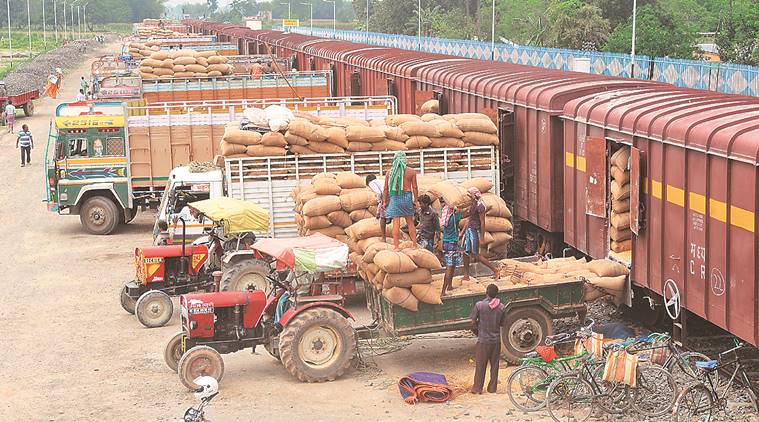 Bihar accounts for more than 80 per cent of India’s 6-7 million tonnes (mt) of annual rabi maize crop. (File photo)
Bihar accounts for more than 80 per cent of India’s 6-7 million tonnes (mt) of annual rabi maize crop. (File photo)
There is trouble brewing in Bihar on account of sliding maize prices that could have a bearing on the Assembly elections scheduled in October-November.
Bihar accounts for more than 80 per cent of India’s 6-7 million tonnes (mt) of annual rabi maize crop. Maize prices at Gulabbagh, the state’s largest mandi for the feed grain in Purnia, are currently averaging Rs 1,250 per quintal. This is way below the Rs 2,000-2,400 rates prevailing in most wholesale markets of India from last June-July till January and also the government’s minimum support price (MSP) of Rs 1,760/quintal for 2019-20.
Maize is a major crop in Bihar’s eastern districts north of the Ganga and on either side of the Kosi: Begusarai, Khagaria, Saharsa, Madhepura, Bhagalpur, Katihar, Purnia, Araria and Kishanganj. These nine districts cover 50 of the state’s 243 Assembly seats. “FCI should open procurement centres and buy from farmers at MSP. Union Food Minister Ram Vilas Paswan had, only three years ago, promised to open one here. I have reminded him,” said Choudhary Mehboob Ali Kaiser, MP from Khagaria.
Kaiser’s LJP, headed by Paswan, is part of the ruling alliance in Bihar along with the BJP and JD(U). Incidentally, Union Animal Husbandry, Dairying and Fisheries Minister Giriraj Singh is the BJP MP from Begusarai, which is also a maize-growing district.
“We suffered a double whammy this year. First, it was unseasonal rains and hailstorm in April, which halved my grain yields. And now, prices have halved,” said Avdhesh Kumar, a farmer from Pirnagra village in Khagaria’s Beldaur tehsil.
Maize is a remunerative crop, especially when grown in the rabi season. And many farmers harvest 50 quintals and above per acre, which is comparable to yields in Midwest US.
“The basic cultivation cost is Rs 15,000-18,000 per acre. At 40 quintals yield and Rs 2,000/quintal rate, we can make good money,” said Kumar, who grows rabi maize on eight acres. That includes four acres taken on lease. “This time, I will not recover even my basic production cost.”
On June 2, maize farmers tried to protest against crashing prices at the Purnia Collectorate. They were denied permission by the administration, which cited the risk of Covid-19 transmission.
Rishav Kumar, a trader at Beldaur, attributed the price crash to lack of demand from the poultry industry. This, even as many farmers reported yields to be 10% lower than last year’s levels.
Maize accounts for 60% of broiler chicken feed by weight. Poultry farmers give around 3.5 kg of feed for a 35-40 gm day-old chick to grow to a 2-2.5 kg live broiler bird over 35-40 days. The share of maize by weight is lower, at about 20%, for layer hen feed (125 gm per egg) and 10-12 per cent in cattle feed.
According to Balram Singh Yadav, managing director of Godrej Agrovet Ltd, India’s largest feed manufacturer, the country’s monthly broiler production has collapsed from 30 crore live birds in January to 11-12 crore in May. The same period has also seen monthly egg production fall from 900 crore to 700 crore.
The falling trend started from mid-January, following misinformation linking the spread of Covid-19 to consumption of poultry products. The lockdown from March 25 and the closure of hotels, restaurants and catering businesses along with educational institutions led to a nosedive in consumption.
The effects of that are now being felt by Bihar’s maize farmers, who were expecting good prices owing to a relatively poor kharif crop this time in Karnataka, Andhra Pradesh, Telangana, Maharashtra and Madhya Pradesh.